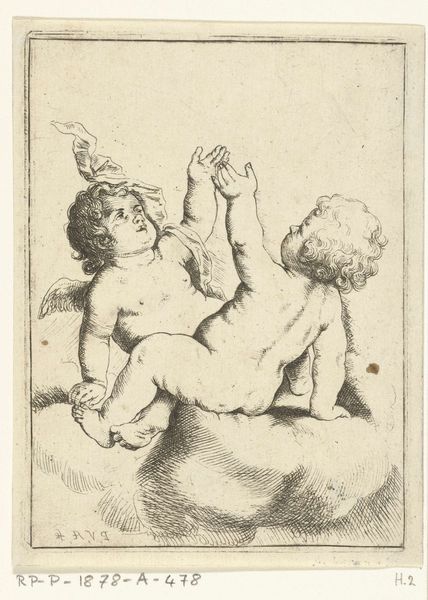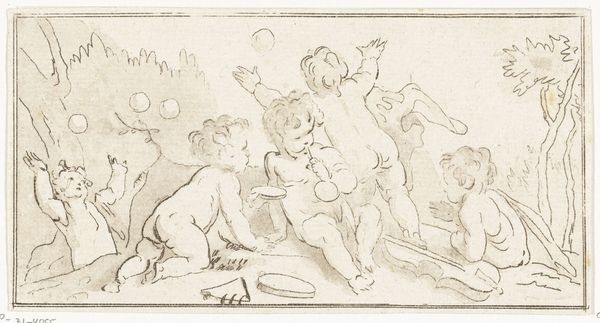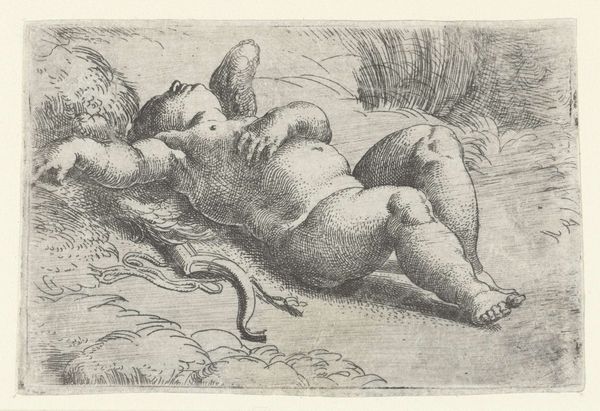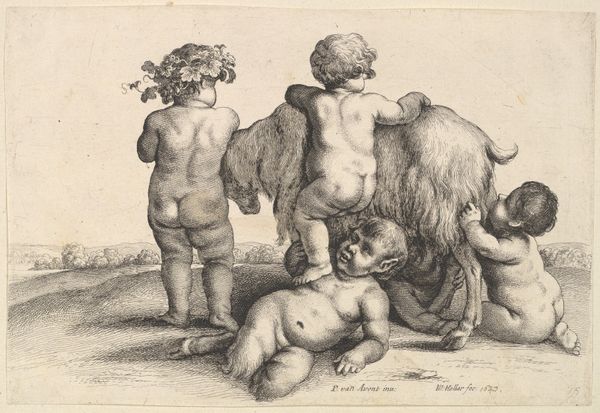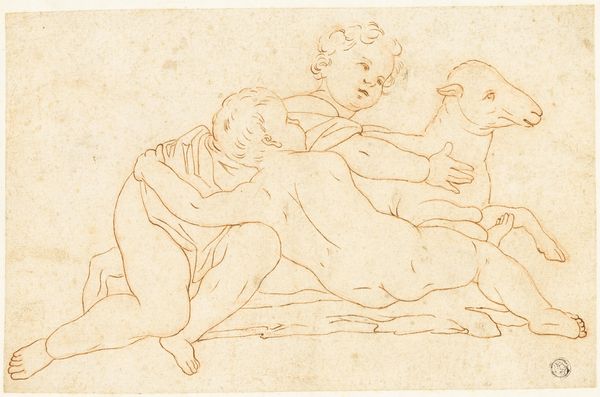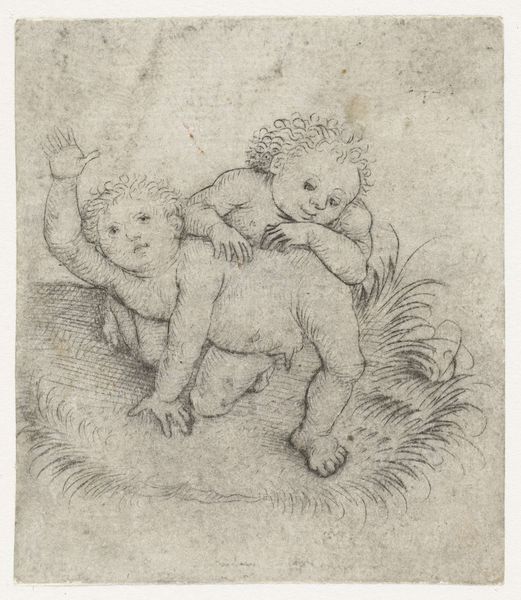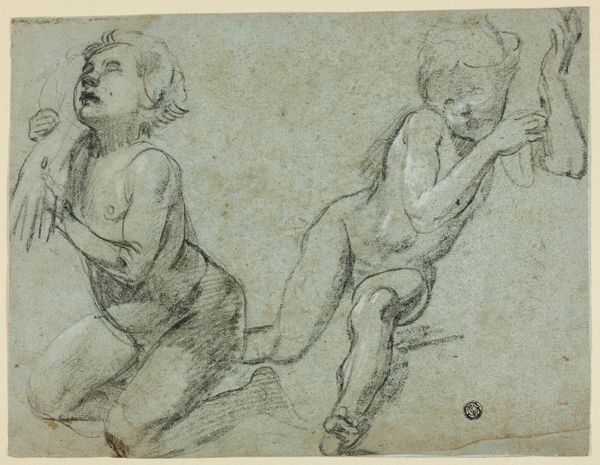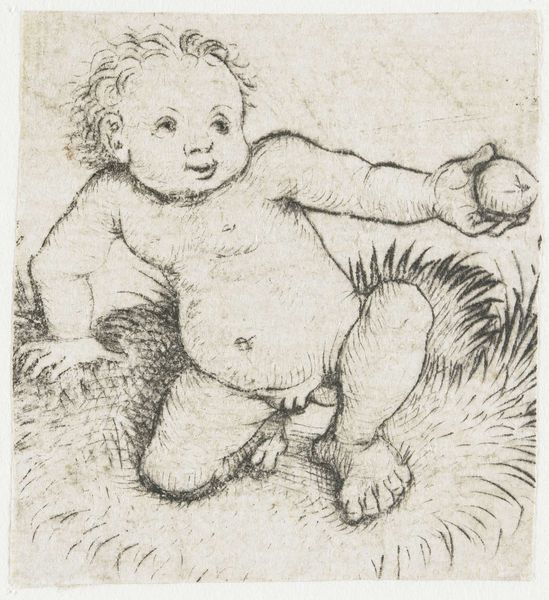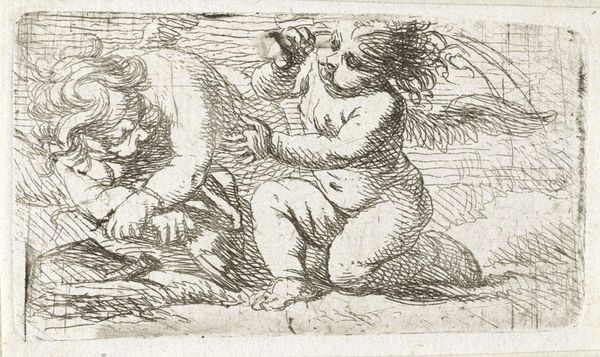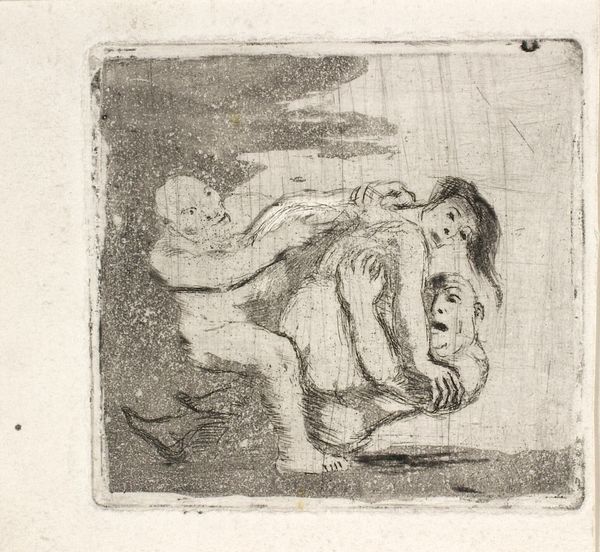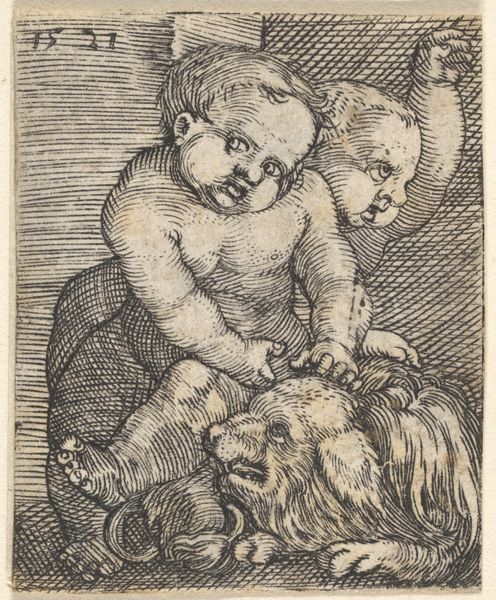
drawing, pencil
#
portrait
#
drawing
#
figuration
#
pencil drawing
#
pencil
#
genre-painting
#
northern-renaissance
Dimensions: height 52 mm, width 70 mm
Copyright: Rijks Museum: Open Domain
Curator: Look at this little world! It's called "Twee spelende kinderen," or "Two Playing Children," a pencil drawing created sometime between 1470 and 1475 by the artist known as the Master of the Amsterdam Cabinet. Editor: My immediate sense is…unease, surprisingly. Not malevolence, but something just off-kilter. The contorted pose of one child and the unwavering stare of the other feel quite…unsettling for an ostensibly playful scene. Curator: I agree, there's a strange tension. Perhaps it’s the way they're rendered – those intensely observed, almost caricatured faces contrasting with the soft, delicate lines used for their bodies. They're babies, yes, but they have this knowing, old-soul quality in their eyes, which could add to that slightly creepy feeling. Editor: Absolutely. And consider the socio-political context of the late 15th century. The Black Death had ravaged Europe. Childhood mortality was incredibly high. I can’t help but wonder if this seemingly innocent portrayal of play doesn’t also function as a meditation on fragility, the precious and precarious nature of young life. Curator: It's true, isn't it? The joy, but with this shadow of inevitable…vulnerability. They seem engrossed, like they’re totally immersed in their world, or at least one is, head planted firmly to the ground it looks like, perhaps lost in a game, but that isolation might contribute to the strange stillness we’re picking up on. Plus, who IS watching them? The loneliness adds an unearthly, almost dream-like layer to the whole experience, what do you reckon? Editor: Definitely dreamlike. I wonder about that single, isolated piece of fruit in the lower corner of the frame. It evokes so many art-historical associations with temptation and original sin. Are we meant to see these children as existing in a pre-lapsarian state of innocence, or has the fall already occurred? Curator: Ooh, nicely spotted! You've suddenly made this less twee and far more complex than I first realised! Thank you. Editor: It’s the beauty of art, isn’t it? There's always another question lurking beneath the surface. Curator: Right, it's about scratching that surface! This time, thanks to you I am starting to feel a lot more satisfied. Editor: A great piece of work – disturbing and life affirming all at once.
Comments
No comments
Be the first to comment and join the conversation on the ultimate creative platform.
